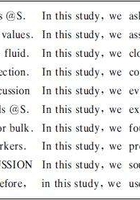
2.4.5 Pattern Grammar:a New Approach to the Lexical Grammar
The status of phraseology having been established,there is a need for a schematic form to represent such sequences.This has most effectively been done by Hunston&Francis(2000)who describe an approach which uses large amounts of corpus data to discover lexical items and the specific phraseological and grammatical patterns in which they regularly occur.
Following Sinclair’s pairing of sense and structure,Hunston&Francis define‘pattern’as“a phraseology frequently associated with(a sense of)a word,particularly in terms of the preposition,groups,and clauses that follow the word”(ibid:3).The writers(see also Francis 1993,1995)take up and develop Sinclair’s ideas regarding the association of meaning and form,and note two uses of patterns.First,in accordance with Sinclair’s observation,different senses of a word can be distinguished by different patterns.Second,certain patterns tend to select words belonging to particular semantic fields.The first point has been well illustrated by Sinclair’s(1991)examples of decline and yield.The second point can be made clear by Francis’s(1995)observation that in the pattern‘it+link verb+adjective+clause’,the adjectives that occur fall into a limited number of meaning groups,which she lists as‘modality’,‘ability’,‘importance’,‘predictability’,‘obviousness’,‘value and appropriacy’,‘rationality’,and‘truth’.
An adequate description of such patterns requires an elaborate coding system.This coding system follows the pattern grammar series published by COBUILD(Francis,Hunston&Manning 1996,1998).The principles behind the design of the grammar codes have been described in Clear,Fox,Francis,Krishnamurthy&Moon(1996).The major codes are shown in Table 2.2.
Table 2.2 Major grammar codes summarized from Hunston&Francis(2000)

We will provide a more precise working definition of‘pattern’in Chapter three.At this point it should be made clear that when we talk about patterns,we may focus on a particular word.For example,one typical pattern in which difficult frequently occurs is adj n(as in This new volume may have a difficult road ahead of it).However,we may also examine the lexico-grammatical associations of the whole sequence without giving a special focus to any of the single words.For example,to investigate the function of it is not difficult to see,it is not necessary to provide a comprehensive analysis of each component word.These two perspectives are ultimately the same thing.The difference lies only in the focus.
Hunston&Francis(2000:36)argue that such an approach to describe English:
●is based on phraseology,as observed in large corpora;
●avoids a distinction between lexis and grammar;
●represents a meeting-point between the concerns of pedagogy—what it is that learners need to know—and those of theory—how the English language can most satisfactorily be described.
These can be seen as central features of this approach.However,the observation more relevant to the present study is that such patterns do not simply talk about grammar.Seen from the functional perspective,questions such as why we prefer it is exiting working here to working here is exiting(examples quoted from ibid:252)are no longer unanswerable.Francis argues the case that:
[t]hese lexical patterns are closely connected with the communicative function of the structure,which is to present a situation in terms of how it is evaluated,putting the evaluation straight after the verb...The ways in which we typically evaluate situations,using this particular structure,are stereotyped,showing our concerns tend very often to be with how difficult or easy life is made for us....(1993:141)To sum up,corpus linguistics breaks down the boarder between lexis and grammar and provides the methodology to take linguistics beyond single words as basic units of meaning.In the late 1990s,this view began to exercise considerable influence upon other areas of language study.Research on translation is a case in point.In what follows,we will revisit the notion of translation equivalence in the light of such findings,which should be seen as a serious challenge to the more orthodox word-by-word cross-linguistic equivalence.